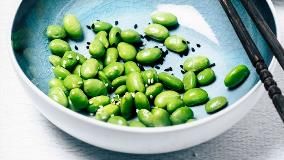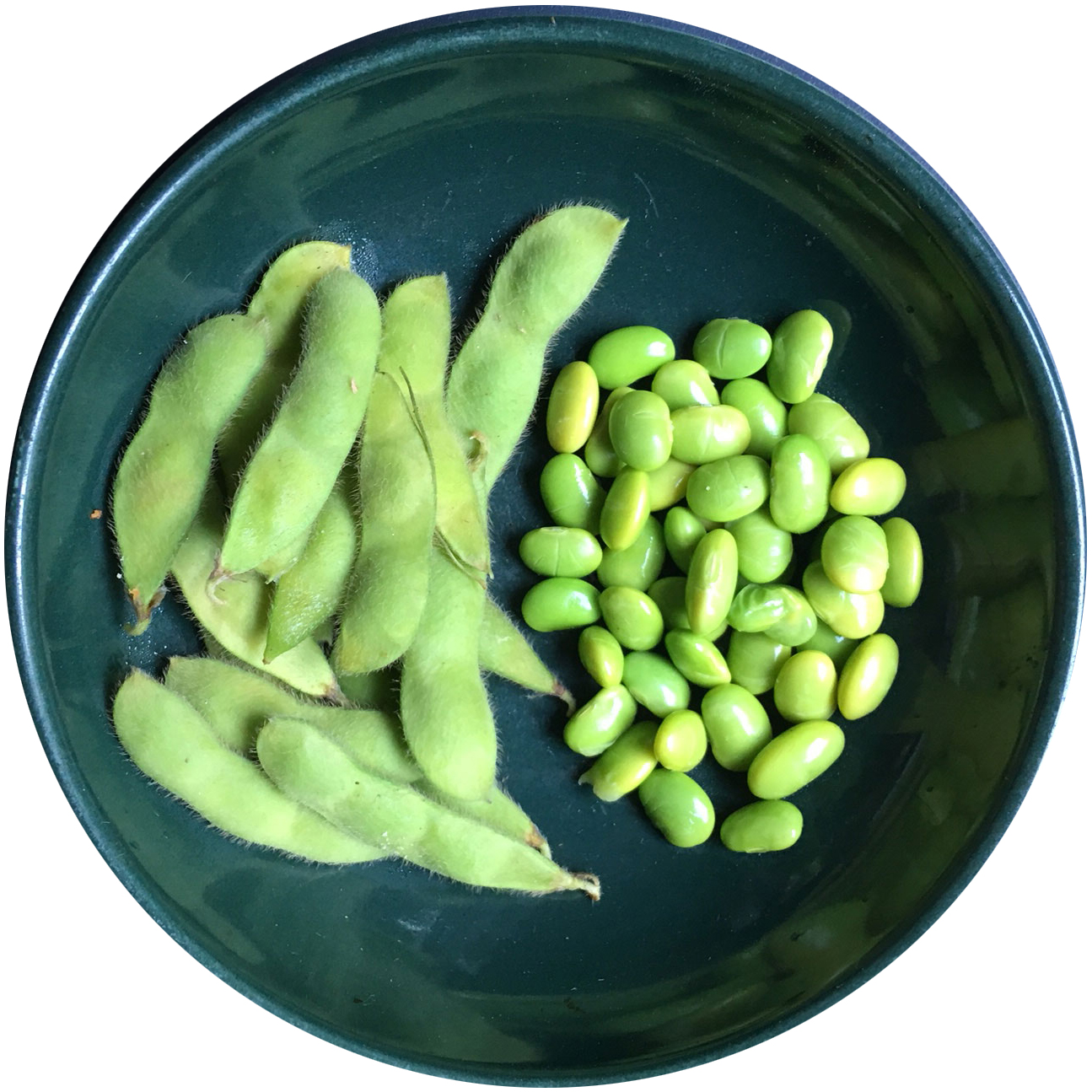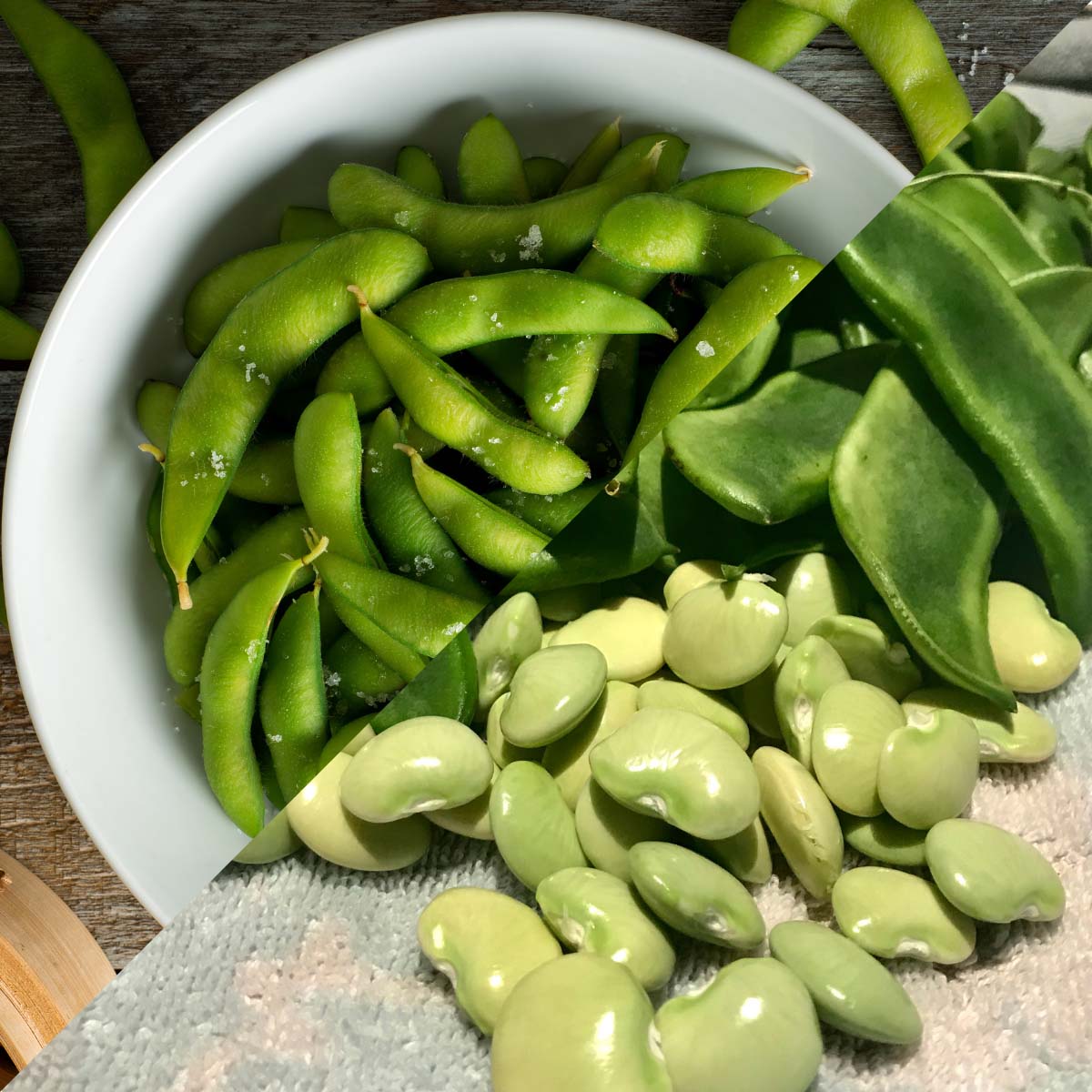Introduction To Soybean Varieties

Soybeans are a versatile and widely consumed legume that comes in various varieties, each with its own unique characteristics. Two popular soybean varieties are edamame and mukimame. Edamame, known for its green pods, is a traditional soybean variety commonly consumed as a snack or side dish. Mukimame, on the other hand, refers to shelled soybeans which can be used in a variety of dishes. Understanding the differences between these soybean varieties can help you make informed choices when it comes to incorporating them into your diet.
Overview Of Edamame And Mukimame
Edamame and mukimame are both popular soybean varieties with distinct characteristics. Edamame, harvested when the beans are still young and green, has a sweet and slightly nutty flavor. It is commonly enjoyed as a snack or side dish. On the other hand, mukimame refers to shelled soybeans that are allowed to mature on the plant, resulting in a sweeter and creamier texture. Mukimame offers versatility in cooking and can be used in various dishes. Both varieties provide nutritious benefits and can be incorporated into a balanced diet.
Nutritional Value Comparison Between Edamame And Mukimame
When comparing the nutritional value of edamame and mukimame, there are some notable differences. Edamame, being harvested at an earlier stage, is higher in protein content, with 18 grams per cooked cup compared to mukimame’s 16 grams. Both varieties are excellent sources of fiber, but edamame holds a slight edge with 8 grams per cup, while mukimame provides 7 grams. In terms of vitamins and minerals, edamame is rich in folate, vitamin K, and manganese, while mukimame is a good source of iron and vitamin C. Overall, both edamame and mukimame offer a nutritious addition to your diet.
Edamame: Traditional Soybean Variety

Edamame, a traditional soybean variety, has been a staple in Asian cuisine for centuries. Originating from East Asia, edamame has gained popularity worldwide due to its numerous health benefits and delicious taste. These young soybeans are harvested when they are still green and have a slightly sweet and nutty flavor. Edamame can be enjoyed in various forms, such as boiled, steamed, or stir-fried. Packed with protein, fiber, and essential nutrients like folate, vitamin K, and manganese, edamame is a nutritious addition to any diet. Its versatility and rich nutritional content make edamame a favorite among health-conscious individuals.
Edamame Origin And Cultivation
Edamame, a traditional soybean variety, has its origins in East Asia, specifically in Japan. The term “edamame” translates to “twig beans,” referring to the method of harvesting the soybeans when they are still on the twigs. Cultivation of edamame involves planting soybean seeds in well-drained soil during the warmer months. Edamame plants require full sun exposure and regular watering. The soybeans are typically ready for harvest around 80 to 90 days after planting. Edamame cultivation has now spread to other parts of the world, where it continues to be a popular crop due to its nutritional value and culinary versatility.
Health Benefits Of Consuming Edamame
Edamame is not only a delicious snack, but it also offers a range of health benefits. This soybean variety is an excellent source of plant-based protein, making it a great choice for vegetarians and vegans. Edamame is also packed with fiber, which aids in digestion and helps with weight management. Additionally, it contains essential vitamins and minerals such as folate, vitamin K, and iron. These nutrients contribute to bone health, blood clotting, and energy production. Regular consumption of edamame can support heart health by lowering cholesterol levels and reducing the risk of cardiovascular diseases.
Mukimame: Shelled Soybeans

Mukimame, also known as shelled soybeans, is a lesser-known soybean variety that has gained popularity in the culinary world. Unlike edamame, which is still in its pod, mukimame is shelled, blanched, and frozen. These tender green soybeans are packed with nutrients and offer a unique flavor. They can be used in a variety of recipes, from soups and stews to stir-fries and salads. With their versatility and nutritional benefits, mukimame adds a delightful twist to any dish. So, don’t hesitate to explore the culinary possibilities of these shelled soybeans in your cooking endeavors.
Difference Between Mukimame And Edamame
Mukimame and edamame are two distinct varieties of soybeans. The main difference lies in their harvesting and processing. Edamame refers to immature soybeans that are still in their pods, while mukimame refers to shelled soybeans that have been blanched and frozen.
Here are the key differences:
- Harvesting time: Edamame is harvested at the peak of its immaturity, while mukimame is harvested when the soybeans have reached maturity and are ready to be shelled.
- Color: Edamame beans are typically bright green in color, while mukimame beans have a slightly darker green shade.
- Taste and texture: Edamame has a sweeter flavor and a firm, chewy texture, while mukimame is milder in taste and has a softer, creamier texture.
- Availability: Edamame is more commonly available in its fresh or frozen form, while mukimame is usually found pre-shelled and frozen.
In summary, while both mukimame and edamame offer the nutritional benefits of soybeans, they differ in their harvesting, processing, color, taste, texture, and availability.
Cooking Methods And Versatility Of Mukimame
Mukimame, being shelled soybeans, offers a wide range of cooking methods and culinary versatility. These soybeans can be boiled, steamed, stir-fried, or added to soups, stews, and salads. They can also be incorporated into various dishes such as pasta, rice bowls, and sushi. With their mild and creamy texture, mukimame can easily take on the flavors of spices, sauces, and seasonings, making them a versatile ingredient in both traditional and modern dishes. Whether you’re looking to enhance the protein content of a meal or add a nutritious element to your favorite recipes, mukimame can be a delicious and versatile choice.
Taste And Texture Comparison

When comparing the taste and texture of edamame and mukimame, there are noticeable differences. Edamame has a slightly sweet and nutty flavor, with a firmer and more chewy texture. On the other hand, mukimame has a milder taste and a creamier texture. The shelled soybeans have a softer bite compared to the edamame pods. These differences in taste and texture lend themselves to different culinary uses. Edamame’s firmer texture makes it ideal for salads, snacks, or stir-fries, while mukimame’s creaminess makes it a great addition to soups, stews, or even blended into dips.
Taste Profile Of Edamame Versus Mukimame
Edamame and mukimame offer distinct taste profiles. Edamame has a slightly sweet and nutty flavor, providing a delightful combination of sweetness and mild earthiness. Its firm and chewy texture adds to the overall experience. On the other hand, mukimame has a milder taste with a creamy texture. The shelled soybeans have a softer bite compared to the edamame pods. Both varieties bring unique flavors to the table, allowing for diverse culinary creations. Whether you prefer the slight sweetness of edamame or the creaminess of mukimame, both are versatile and delicious options to explore in your cooking endeavors.
Texture Differences And Culinary Uses
Mukimame and edamame also differ in terms of texture, which impacts their culinary applications. Edamame, with its firm and chewy texture, is often eaten as a snack or added to salads, stir-fries, and sushi rolls. Its crunchy pods make it a popular finger food. On the other hand, mukimame has a softer, creamier texture, making it ideal for purees, dips, and spreads. It can be mashed or blended to create a smooth and creamy consistency, perfect for incorporating into soups, sauces, and bean dips. Both varieties offer unique textures that add depth and variety to a range of dishes
Health Benefits And Risks

When it comes to the health benefits, both edamame and mukimame offer a range of nutrients that support overall well-being. They are both excellent sources of protein and fiber, which promote satiety and aid in digestion. Additionally, they contain essential vitamins and minerals such as iron, calcium, and vitamin K. These nutrients contribute to bone health, cardiovascular function, and immune support.
However, it is important to note that soybeans, including edamame and mukimame, contain phytoestrogens, which are plant compounds that mimic the hormone estrogen. While these compounds may have potential health benefits, such as reducing the risk of certain cancers and managing symptoms of menopause, they may also have negative effects in some individuals. It’s important for anyone with hormone-related conditions or concerns to speak with a healthcare professional to determine the appropriate intake of soy products.
In conclusion, while edamame and mukimame offer numerous health benefits, it is essential to consume them as part of a balanced diet and consider individual health factors. Incorporating these soybean varieties into meals can be a flavorful and nutritious addition, but it is always recommended to consult with a healthcare professional for personalized advice.
Nutritional Content Breakdown Of Edamame And Mukimame
Edamame and mukimame are both rich in essential nutrients and offer numerous health benefits. Edamame is known for its higher protein content, with around 10 grams per 1/2 cup serving, making it an excellent plant-based protein source. It is also high in fiber, providing about 5 grams per serving. In terms of vitamins and minerals, edamame is a good source of iron, calcium, and vitamin K. On the other hand, while mukimame has a similar nutrient profile, it tends to have slightly higher levels of protein and fiber compared to edamame. Both varieties can be enjoyed as part of a balanced diet to support overall health.
Potential Health Risks Associated With Consuming Soybeans
While soybeans are generally considered safe for consumption, there are a few potential health risks to be aware of. These risks mainly apply to individuals who have specific allergies or medical conditions. Some people may have soy allergies, which can cause allergic reactions such as hives, itching, or difficulty breathing. Soybeans also contain compounds called phytates, which can interfere with the absorption of certain minerals like iron and zinc. Additionally, soybeans contain isoflavones, which can mimic estrogen in the body and may have hormonal effects. It’s important for individuals with allergies or medical conditions to consult with a healthcare professional before consuming soybeans.
Conclusion

In conclusion, edamame and mukimame are two distinct soybean varieties that offer unique taste, texture, and nutritional benefits. Edamame is the traditional variety, known for its rich flavor and high protein content. On the other hand, mukimame offers versatility in cooking methods and can be easily incorporated into various dishes. Both varieties provide essential nutrients and can be enjoyed as part of a balanced diet. Whether you prefer the traditional edamame or the shelled mukimame, including these soybeans in your meals can add nutritional value and enhance your culinary experience. So go ahead and explore the world of edamame and mukimame to discover your favorite soybean variety.
Summary Of Key Differences Between Edamame And Mukimame
Edamame and mukimame are soybean varieties with notable differences. Edamame is harvested when the beans are still green and enclosed in their pods, while mukimame are shelled beans that have been allowed to mature and dry. Edamame has a sweeter and more delicate flavor, while mukimame has a nuttier taste. In terms of texture, edamame is tender and slightly crunchy, whereas mukimame is firmer and chewier. Availability-wise, edamame is more commonly found in grocery stores and restaurants, while mukimame may be harder to come by.
Recommendations For Incorporating Both Varieties Into A Balanced Diet
Incorporating edamame and mukimame into a balanced diet is a great way to enjoy their nutritional benefits. Here are some recommendations:
- Snack option: Steam or boil edamame and mukimame and enjoy them as a healthy snack. Sprinkle some sea salt or your favorite seasoning for added flavor.
- Salad topping: Add boiled or steamed edamame or mukimame to your salads for a boost of protein and fiber. They can provide a satisfying crunch and nutty flavor.
- Stir-fry addition: Include edamame and mukimame in your stir-fry dishes for extra texture and nutrients. They can complement various vegetables and proteins.
- Soup ingredient: Add cooked edamame or mukimame to vegetable or bean soups to enhance their protein content and add a unique touch.
Remember to experiment with different recipes and cooking methods to explore the versatility of both edamame and mukimame in your balanced diet.
FAQ About Edamame Vs Mukimame: Exploring Soybean Varieties
Q: What is the main difference between edamame and mukimame?
A: The main difference lies in their processing. Edamame are young soybeans steamed or boiled in the pod, while mukimame are shelled and then further processed, typically frozen.
Q: Are there any nutritional differences between edamame and mukimame?
A: Both edamame and mukimame are rich in protein, fiber, and various vitamins and minerals. However, the processing of mukimame may affect some nutrient levels compared to fresh edamame.
Q: How can edamame and mukimame be incorporated into a diet?
A: Edamame and mukimame can be enjoyed as snacks, added to salads, stir-fries, soups, or used in various recipes. They can provide a plant-based source of protein and nutrients.
Q: Are there specific culinary uses where edamame is preferred over mukimame and vice versa?
A: Edamame is often preferred for its freshness and flavor when used in dishes where the whole bean is desired, such as in salads or appetizers. Mukimame, on the other hand, may be more convenient for cooking and baking where shelled beans are needed.
Q: Can edamame and mukimame be used interchangeably in recipes?
A: While both edamame and mukimame are soybeans, their texture and taste may vary slightly due to the processing differences. It is best to consider the specific dish and whether whole beans or shelled beans are required when choosing between the two.
Q: Are there any cultural or traditional differences associated with edamame and mukimame?
A: Edamame has its roots in Japanese cuisine and is often enjoyed as a snack or appetizer in Japanese restaurants. Mukimame, a term coined for shelled edamame, may be more commonly found in Western markets and recipes that require convenience.

Marine Bay Restaurant received the International Food Culture Award 2019 as the Best Szechuan & Hunan Restaurant, enjoying a reputation in North America. Renowned for the tunnel, authentic, and cheap. Known as “Human Taste First Garden,” 2013 Vancouver culinary first book named “Best Chuan Xiang Outlets,” significant temperature and China Eastern Airlines designated outlets.